On 26 March we celebrated the 52nd Independence Day of our beloved country, Bangladesh. I feel really proud to be associated with the liberation movement of Bangladesh and the democratic process prior to its birth. Needless to mention that the 1969 student mass upsurge had a great role in the liberation movement of Bangladesh. In this article, I shall try to focus on my involvement in the 1969 movement as a progressive left female student leader of the then East Pakistan.
My Dhaka University days
After passing the HSC examination, I had the opportunity to be admitted in the Dhaka University (DU) in 1966. Like many other enthused young students, I was also very pleased, to be in the 1st year B.Sc. (Honors) in the Faculty of Science, and I started my life at the Dhaka University, with a great ambition. It needs to be mentioned here, that there were only a few female students in the Science Faculty of DU. In some departments, there were one or two, as for example, in the 1st year of 1966-67 session, I was the only female student in my Statistics class of 60 students, and there was only one in the 2nd and 3rd year; they were, Dil Afroz Ritu Apa and Khadiza Apa (both expired). Every day, we gathered during tiffin (lunch) break, and had nice friendly talks and gossips.
I had been given a seat in the then only women’s resident hall, Rokeya Hall, for residing. The Rokeya Hall had 4 beautiful buildings surrounded by a huge wall with a gateman at the gate; inside, there were flower gardens: a serene, calm and educational environment prevailed. Professor Akhter Imam, the Provost of the Hall, imposed a strict ‘evening rule’ for girls, to return to the Hall.
Although a woman, I was a brave and always active and spirited person, and worked hard with my academic studies, as well as, participated in the DU’s extra-curricular socio-cultural-activities, e.g., cultural functions, sports and debates societies, and formed a girls’ cultural troop, Sanskriti Sanshad. Through the Sanskriti Sanshad, I came in contact with famous singers Lutfor Rahman, Ajoy Roy, Monirul Huq Monu Bhai, Pinaki Das, and others. Our troop sang ‘Gono Sangeet’ (people’s songs) at students’ political functions.
Becoming a progressive student leader
I was also involved in student politics, with the East Pakistan Student Union (EPSU). Later on, EPSU split into 2 factions: Menon and Motia groups, and I was a female leader of the Rokeya Hall (EPSU-Menon). Besides organizing student political activities at the Rokeya Hall involving students’ demands, I had to liaise with the EPSU Central Committee members and All-Party Democratic Action Committee leaders. Soon I became Secretary General of the Rokeya Hall, EPSU (Menon). This is how I got involved in the 11-points students’ movements of 1969.
During those days, EPSU (Menon) had a few discussion groups with the leading members of the party. Each group had five members and a guide. Our group members were Jasim Ahmad (Mohsin Hall), Altaf Hossain (Fazlul Huq Hall), Pranob Bose (Jagannath Hall), Lila Saha and Nazma Shikha (myself) – we both girls from the Rokeya Hall. We used to sit in group meetings once in a week in the house of our guide, Dinesh Saha, a communist activist teaching in a college, hiding his communist identity.
During that period, the pro-Chinese leftist Communist factions of Bangladesh formed a coordination committee under the leadership of Kazi Zafar Ahmad, Haider Akbar Khan Rono, Rashed Khan Menon, Mustafa Jamal Haider, Abdul Mannan Bhuyia and Sunil Guho. Juno Bhai was acting as a coordinator. Haider Anwar Khan Juno, the then President of Biplobi Chatra Union (after the Menon group split) was the central coordinator of the various groups. We also used to have another group meeting at the residence of Dr. Murtaza, about the coordination committee. Thus, we, the members of the same group, become closer gradually.
In the process, I became a leading person of the Biplobi Chatra Union. I used to participate in all the activities of the organization. Atiqur Rahman Salu Bhai was given the responsibility of Office Secretary of Biplobi Chatra Union, later on he became its President. There was a temporary office of the Biplobi Chatra Union in Lalbagh. I used to go there for meetings and various other assignments.
I also used to participate in all the public meetings organized by the student wing and the party. Any meeting where Maulana Bhasani was the Chief Guest I used to attend, sitting in the front row with other female activists.
Maulana Bhasani once arranged a public meeting cum conference at Santosh, Tangail. Student activists from all the DU Halls, hired buses for attending the conference. We, the female students, also hired a bus and went to Santosh. While coming back, our bus was missing. Mashiur Rahman Jadu Mia arranged a new transport and sent us back to Dhaka.
A short diary of the 1969 movement
The Dhaka University Central Student Union (DUCSU) was always playing leading role in the student movements of the country. During that time, Tofael Ahmed of the East Pakistan Student League (EPSL) was the Vice President (VP) and Nazim Kamran Choudhury of the National Student Front (NSF) was General Secretary (GS) of DUSCSU.
The 1969 uprising in East Pakistan was a very significant political student movement in East Pakistan (now Bangladesh). The uprising consisted of a series of mass demonstrations and sporadic conflicts between security forces and demonstrators. The Shorbodolio Chatro Shongram Porishad (The All-Party Student Action Committee) was formed on 5 January, 1969, which presented the 11 points charter.
The 11 points charter partially included the 14 points of EPSU and Six-Points of the Chatra League (Awami League) as well as other short- and long-term socio-economic, national political programmes, including democracy, nationalization of industries, banks, and big businesses. Several meetings were held to strategize and work-out actions, at the Bottola and Modhur canteen, followed by processions. We, the resident students of the Rokeya Hal, participated in most of these events, raised slogans, voiced our demands. The female activists used to be at the front of processions, so that the law enforcing agencies would be somewhat restrained.
On 16 January, DUCSU-GS, Nazim Kamran, initiated a discussion with DUCSU VP, Tofael Ahmed, to bring out a procession the next day demanding the withdrawal of the Agartala Conspiracy Case, and the release of the 35 detainees, including Sheikh Mujibur Rahman. To their utter surprise, according to Prof. Taj Hashmi who was present at the meeting as an NSF activist, Tofael Ahmed declined, expressing doubts about such an action and fearing brutal retaliations by the regime. (See, “The 1969 Mass Uprising in East Pakistan: As I saw it” by Taj Hashmi, https://countercurrents.org/2020/01/the-1969-mass-uprising-in-east-pakistan-as-i-saw-it/)
On 17 January, with a few students from the Jinnah Hall (now the Surjya Sen Hall) and Mohsin Hall, led by Nazim Kamran Chowdhury, the DUCSU-GS, brought out a procession, and started throwing brickbats at a large contingent of police force with helmets, long sticks, and some rifles with bayonets on. This confrontation continued for about 2 hours between around 10 am and 12 noon.
On 18 January student activists from different DU halls participated in the procession, and the number swelled to around four to five hundred, mainly with Dhaka University students from Menon Group and NSF. The pro-Awami League Student League and Motia group students were initially reluctant to join the procession, having doubts about its effectiveness against the regime. But, we, girls from the Rokeys Hall (EPSU Menon) joined. The police, who were soon reinforced by the East Pakistan Rifles (EPR) threw hundreds of tear-gas shells at students. Most of the shells exploded and gave a terrible burning sensation to our eyes. We kept buckets of water handy and wiped our eyes with soaked handkerchiefs and rinsed with buckets of water, to sooth our burning eyes.
Meanwhile, several Student League supporters had also joined. Many were seriously injured. Some had blood-soaked faces and bodies. Eventually, some EPR troops started chasing students to the Jinnah Hall, with rifles affixed with bayonets. And, several students were arrested from their rooms, picked up by the EPR and was severely beaten up in custody.
The fall-out of the EPR raid stirred up not only the entire Dhaka University – teachers and students, all became furious at the government, vehemently criticized Governor Monem Khan for the use of tear-gas, and police and EPR excesses in the Campus. The news with the statements of Teachers, students, political parties and social leaders were published in most of the daily newspapers of Dhaka.
On 19 January the movement got momentum after the pro-Awami League Student League leaders agreed to join the movement, with the Student Union (Menon and Motia Groups). Accordingly, they all met. Mahbubul Haque Dolon, Nazim Kamran Chowdhury, Ibrahim Khalil and others from the NSF; Abdur Rauf, Abdul Quddus Makhon, Tofael Ahmed, Khaled Muhammad Ali (from the Student League); Mustafa Jamal Haider, M Mahbubullah from the EPSU (Menon), Motia Chowdhury from EPSU-Motia attended the meeting, which was a short meeting, lasting less than half an hour.
The district administration (DC) imposed section “144” in Dhaka city from 20 January, thereby authority banned all political activities and gatherings.

Defying “144”
In the evening of 19 January Asad Bhai (Asaduzzaman) came to Sharif Miah’s canteen just outside the famous Madhur Canteen. Jasim, Tofazzal, myself and others were there. We had half plate of Tehari and Tea. Asad Bhai was telling he will be leaving Dhaka next day early morning. We told him that tomorrow we would break 144, how could he leave. He said, “my mind is with you, but I have to leave due to family pressure”. After that Asad Bhai with Jasim and others left the place for Provincial Restaurant at the Dhaka Stadium to meet Abdul Mannan Bhuyia and other senior leaders to discuss the strategies of the movements.
On 20 January, defying “144”, thousands of students, boys and girls, from the Dhaka University and various colleges in the city, gathered, and assembled at the Battala – in front of the Arts Building of the University. By 10 am, there were more than 10,000 students in and around. These thousands of defiant students were raising slogans against the Ayub Regime, West Pakistani rulers and Abdul Monem Khan, who was the Governor of East Pakistan. Immediately, after the assembly at the “Battala” the procession started from the Arts Building with the pledge of defying “144”. As usual I was at the front of the procession with other female activists.
Surprisingly, we found no police or EPR troops on the road, as officially Section 144 of the Penal Code was there. The procession went towards the Shaheed Minar via the Old High Court and Curzon Hall. The main procession took the Fuler Road, turned near the corner of the SM Hall towards the Shahid Minar.
Asaduzzaman – Asad Bhai, the first martyr
Asad Bhai was supposed to leave Dhaka early morning. But he did not go; he joined the procession near the SM Hall corner. Near the Medical College, police intervened with barricades, lathi charged and threw tear-gas shells. The procession got divided into two parts, one part broke the barricade and marched towards Alauddin Road of old Dhaka via the Medical College and went to the Bahadur Shah Park where the procession was formally ended with short speeches of the leaders.
The Other part of the procession marched towards the Karzon Hall. Myself with Asad bhai were in this procession. We were trying to reach the Shaheed Minar. However, soon we discovered, as the procession almost reached the Shaheed Minar, a police jeep was standing beside the road. When we crossed the jeep one Bangali Sergeant shot Asaduzzaman with his revolver in point blank range. Sporadic bleeding came out from his left chest, soaked his shirt, and flooded the road, and In a blink of a second, we decided to go for actions; he was taken inside the Dhaka Medical College emergency bed, We cried for help for treatment but at DMCH, he was declared dead. Asaduzzaman was the first martyr of 1969 movement. Thousands of students and public rushed to DMCH.

Immediately after the death news of Asaduzzaman, police became mischievously active. They, with the help of medical college authorities, wanted to snatch away the dead-body of Asad, to take to a unknown destinations.
We political student compatriots of medical students – Dr. Ashik, Dr. Snigdha, Dr. Rahman, Dr. Jinnha – and friends of Asad bhai, teamed up, and did not allow that rude journey for his corps to happen. Dr. Ashik told me, “You keep Asad’s shirt, we are going to take the body to hide”. As the decision was taken, we took the body outside through back gate, and climbed to roof top of the Dhaka Medical College and Hospital. I got down through the back side of the roof top gate, from there to ground floor (near ladies-student hostel gate). We went out using the back gate and reached near the road, and took vehicle towards Asad’s home.
Shaheed Asad’s blood-soaked shirt sparked the 1969 uprising
The next day, a vast mourning procession began. From the Rokeya Hall, I joined with a big female student group. Since I had the blood-soaked shirt of Shaheed Asad Bhai which I was hiding in my bag, I hoisted it as a ‘Praner Pataka – Flag of Love’. Holding the blood soaked Asader Shirt at the top of a bamboo stick, we moved forward, as our student leaders and common people joined us. The spontaneous demonstration turned to a mourning procession of 3 to 4 km-long, procession trailed through the city and finally converged at the Shaheed Minar.

Deepa Sen, a front line activists of EPSU- Menon and Biplobi Chattro Union, came to Dhaka from Chittagong after completing her B.Sc Honours programme from Chittagong University in 1967. We were very close and worked relentlessly together.
The procession went to the then Ayub Gate of Mohammadpur and we renamed the gate as “Asad Gate”. Since then, it is known as the Asad Gate. The truth is Asad’s death turned the mass-movement of 1969 into a mass-uprising.
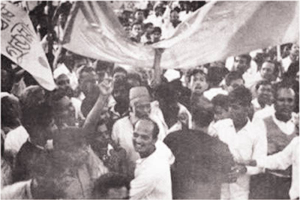
After the death of Asad Bhai, Maulana Bhasani organized a mass rally in Santosh, Tangail. A group of women students from Dhaka University joined there under my leadership. The Student Action Committee declared 3 days of mourning with protest processions throughout East Pakistan. On the last day of hartals, the students and police clashed.
On 24 January, police again killed teenager Matiur Rahman, a student of the Nava Kumar Institute in Dhaka. Then a massive procession with Matiur’s body, joined by hundreds of thousands of protesters from all walks of life, labourers, street urchins, and factory and jute mills workers in thousands, turning it a mass uprising against the dictorial Ayub regime.
Asad’s Shirt
Shamsur Rahman
Like bunches of blood-red Oleander, Like flaming clouds at sunset
Asad’s shirt flutters
In the gusty wind, in the limitless blue.
To the brother’s spotless shirt
His sister had sown
With the fine gold thread
Of her heart’s desire
Buttons which shone like stars;
How often had his ageing mother,
With such tender care,
Hung that shirt out to dry
In her sunny courtyard.
Now that self-same shirt
Has deserted the mother’s courtyard,
Adorned by bright sunlight
And the soft shadow’
Cast by the pomegranate tree,
Now it flutters
On the city’s main street,
On top of the belching factory chimneys,
In every nook and corner
Of the echoing avenues,
How it flutters
With no respite
In the sun-scorched stretches
Of our parched hearts,
At every muster of conscious people Uniting in a common purpose.
Our weakness, our cowardice
The stain of our guilt and shame-
All are hidden from the public gaze
By this pitiful piece of torn raiment Asad’s shirt has become
Our pulsating hearts’ rebellious banner.
[Translated by Syed Najmuddin Hashim, https://nonviolentmovements.wordpress.com/2013/07/16/a-moving-poem-by-shamsur-rahman-on-1969-martyr-asad/]
Prologue
Like many other 1969 movement activists, I was also present in all the processions from 19 to 24 January,1969. But the 1969 Movement went beyond our expectation. In1969, I was a third-year Honours student of Dhaka University. Although I was an active participant of the 1969 Movement and an eyewitness to the death of Shaheed Asad, got his blood-soaked shirt to keep in my custody, yet I did not imagine that, this would eventually change the political scenario of South Asia with the bifurcation of Pakistan, with the emergence of independent Bangladesh.

Nazma Ahmad
Dr. Nazma Ahmad obtained B.Sc.(Hons.), M.Sc. from Dhaka University, M. Phil from Cairo UN Demographic Centre and Ph.D from Khulna University. She worked in the Bangladesh Census Commission under the Bangladesh Bureau of Statistics, GOB. Then worked in the Ministry of Education, Government of Nigeria and UNCDC in Egypt. After coming back to Bangladesh, she worked in Dhaka for 30 years, with various Government and International organizations, as a International Civil Servant in UNICEF, in MBSTU and with programmes of various development partners, e.g., UNDP, DFID, World Bank, ADB, FAO, UNFPA, etc.. Dr. Nazma is married to Prof. Jasim Uddin Ahmad, a former Vice Chancellor of Jahangirnagar University. Both of them are associated with social and political activities at home and abroad. E-mail: nbahmed0803@gmail.com

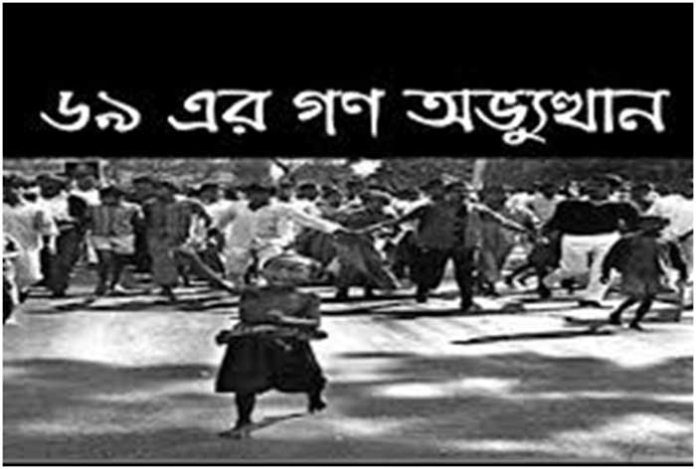
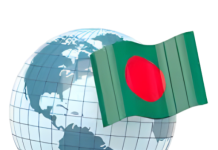
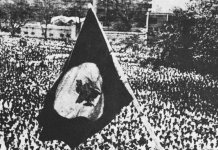
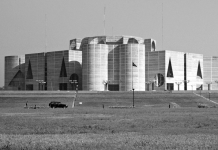
Many Many Thanks and grateful to tag me in this writeup.